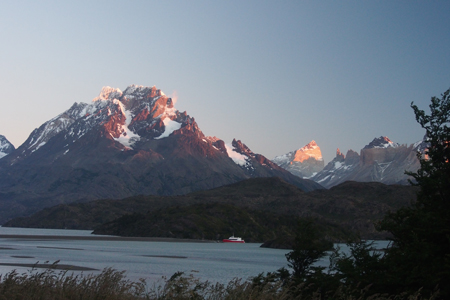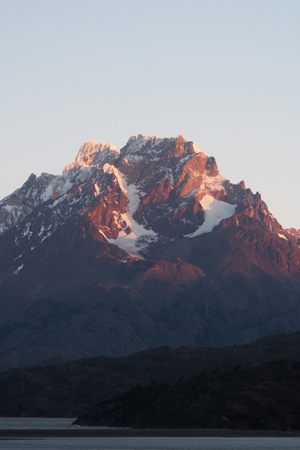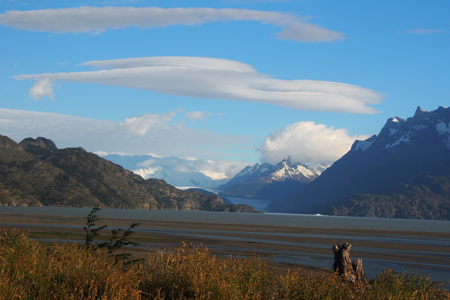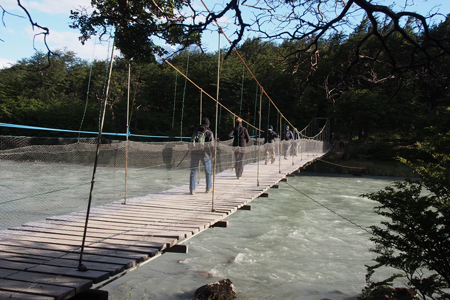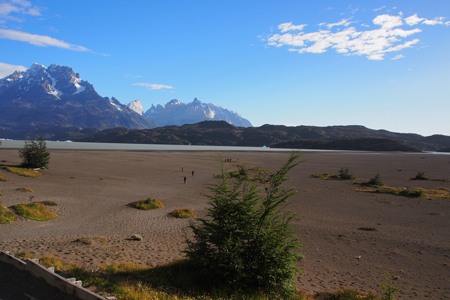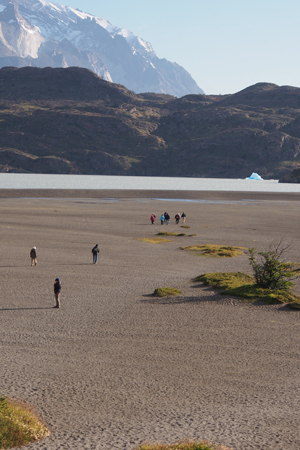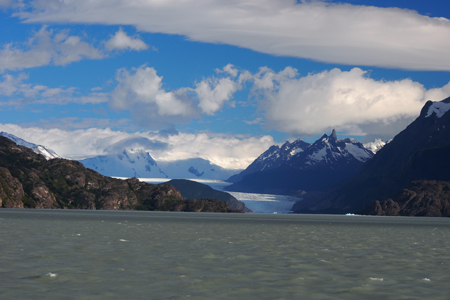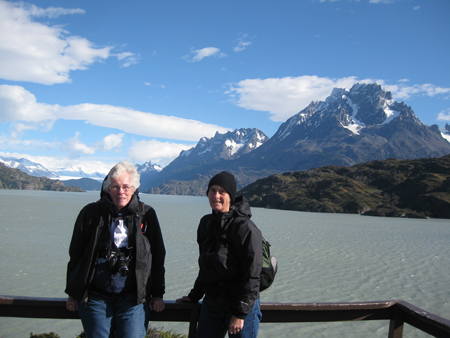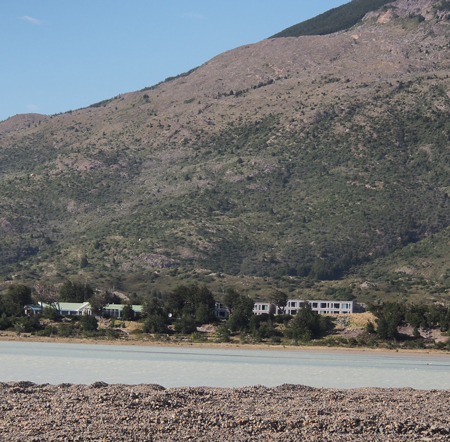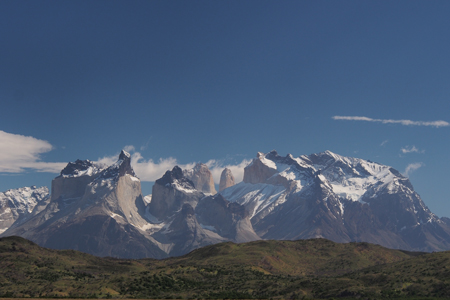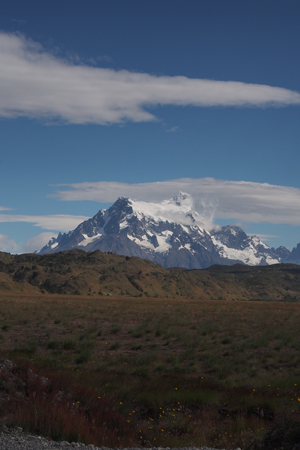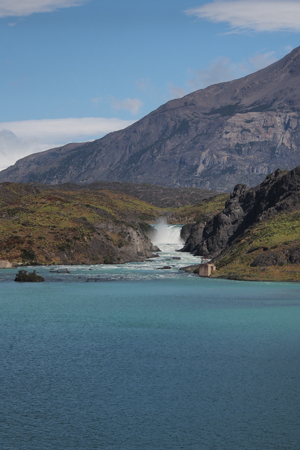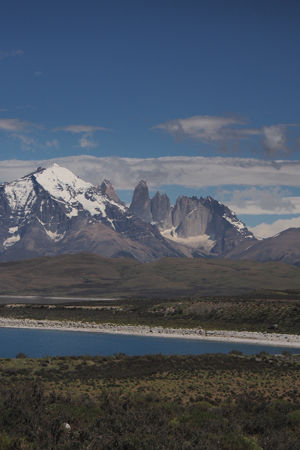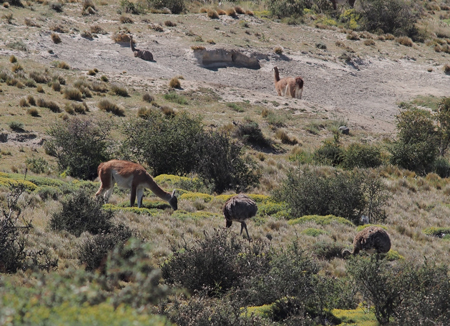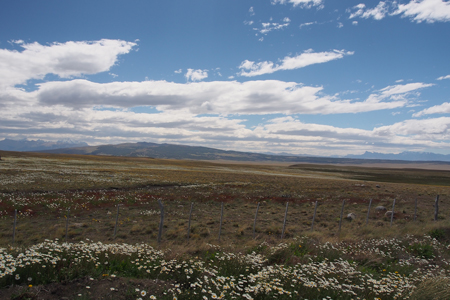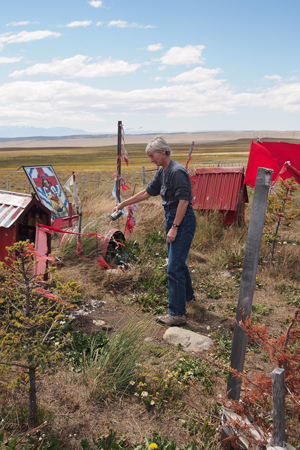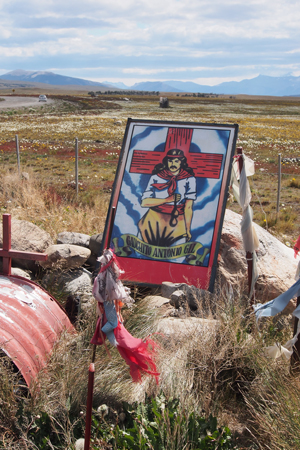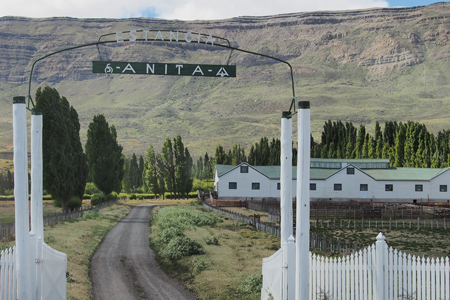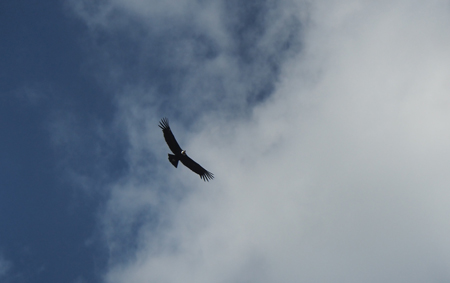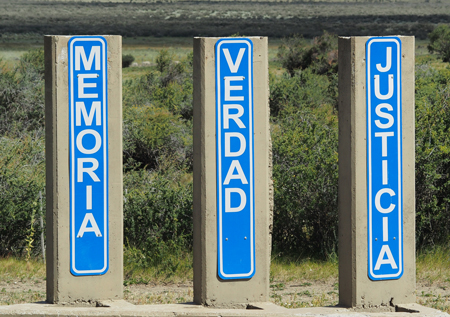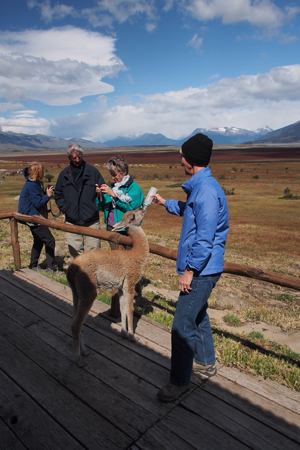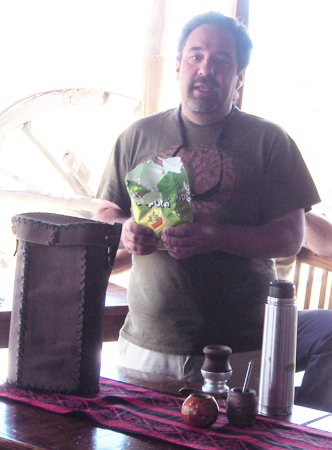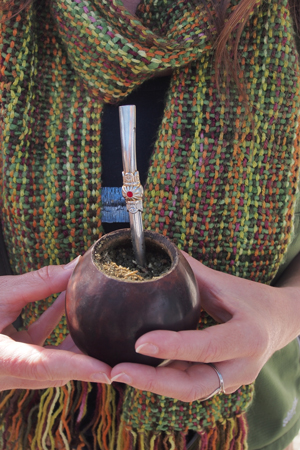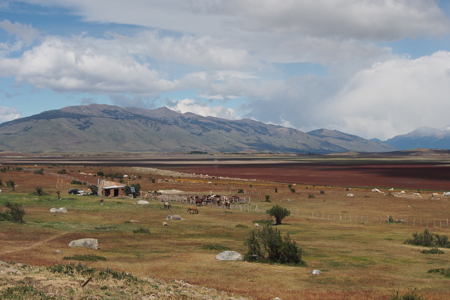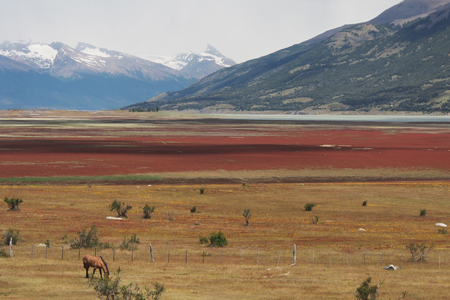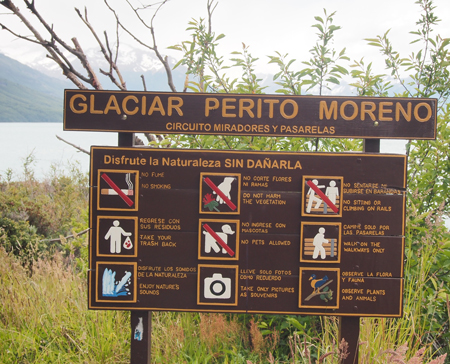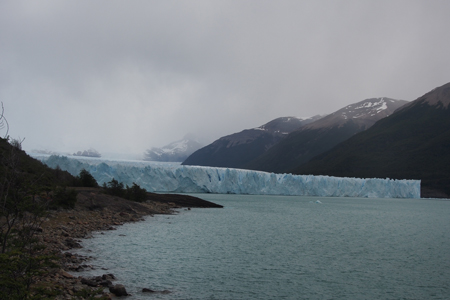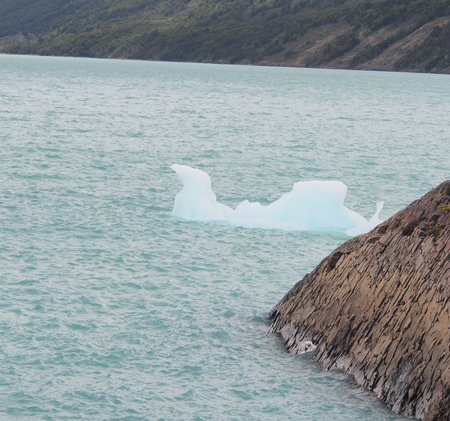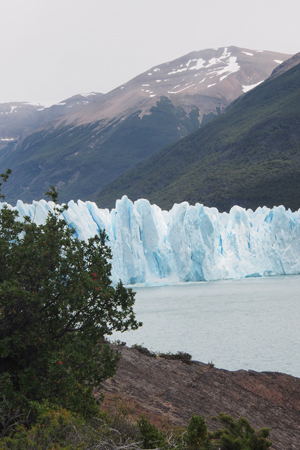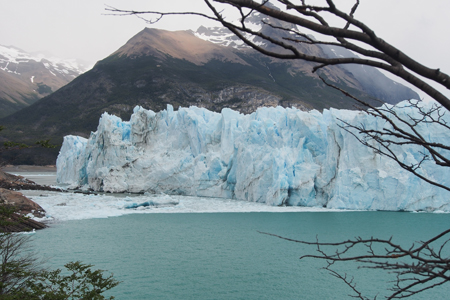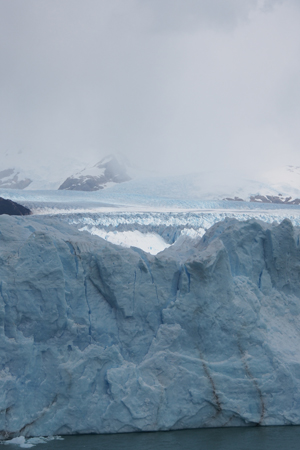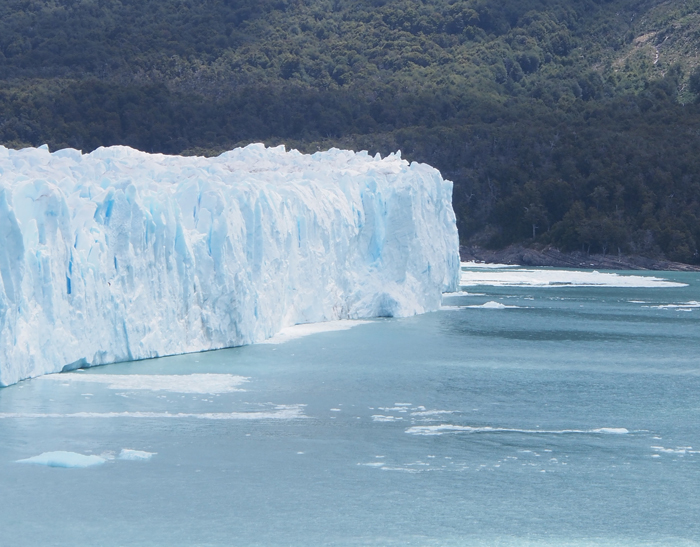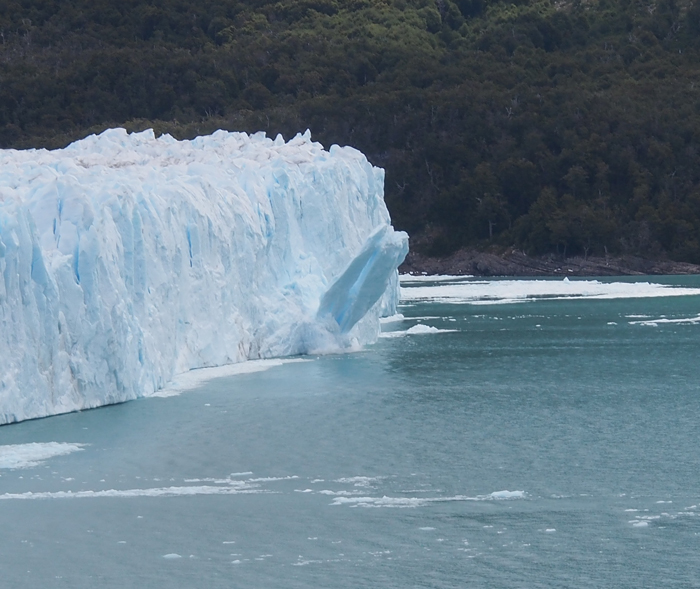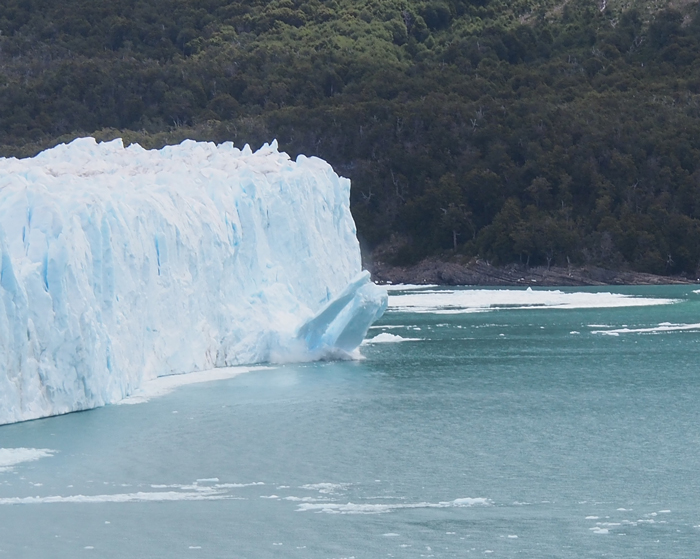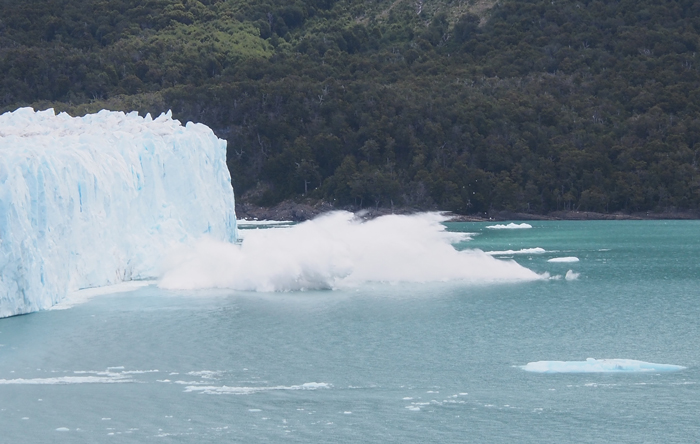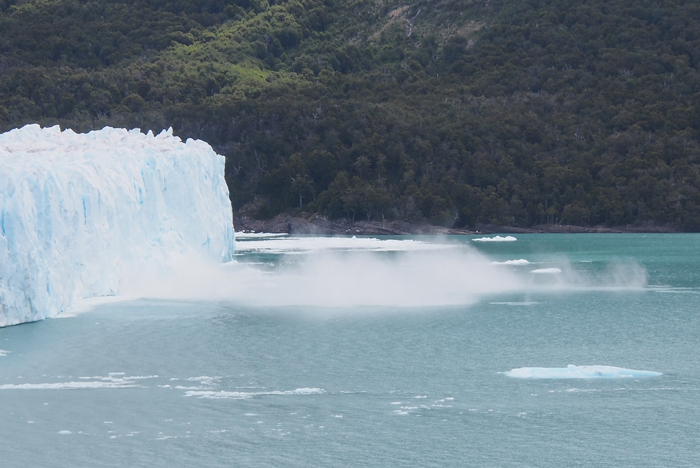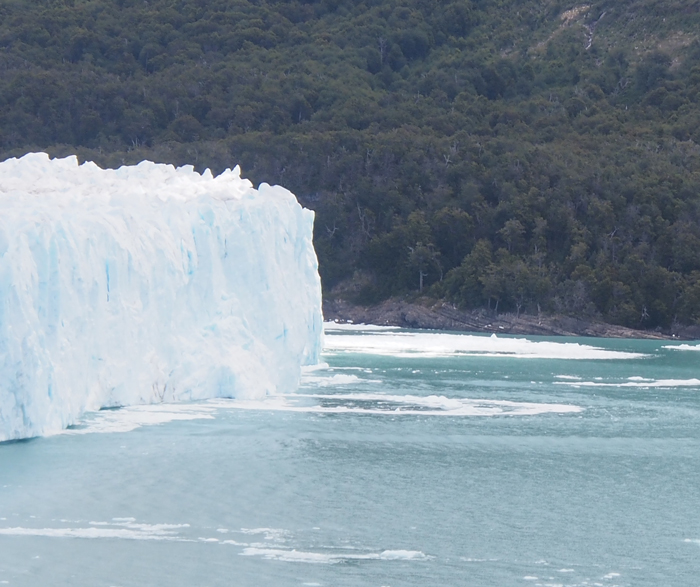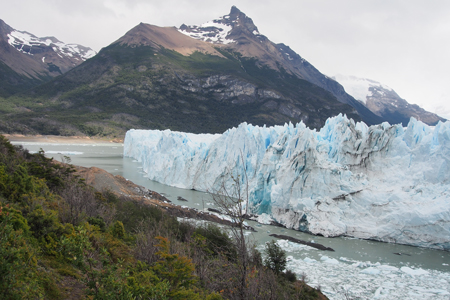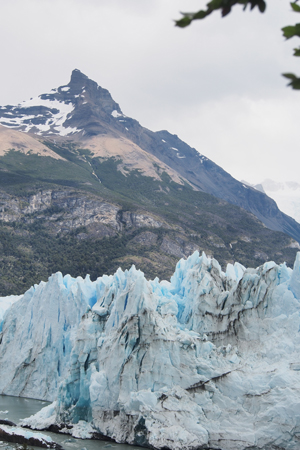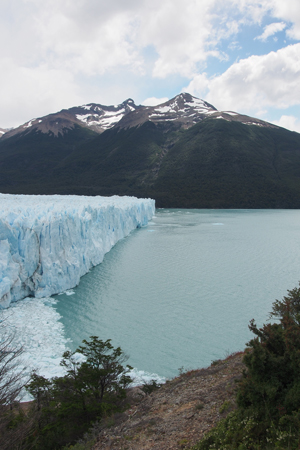Sun., 1/4/15 – Torres del Paine NP to El Calafate
Our room at the Hotel Lago Grey overlooked the Paine Mountains and Lago Grey and we could see all the way to the base of the Grey Glacier. We were able to watch a pretty sunset over the lake and mountains at 10:30 and, in the morning, sunrise on the white granite at 5 AM.
After breakfast and checking out, our bus drove us five minutes from the hotel for our morning hike. We crossed a swinging bridge over a rushing river of glacial melt, walked a short way through a lenga forest, and crossed a long, very windy patch of pebble beach. It was not easy to walk on. The last part of the trail was up the side of a rocky peninsula with a viewing platform at the point. We had great views of the Great Paine and the Grey Glacier 14 km away across Grey Lake. There were a few growlers in the lake. It was warm (60°) but the wind finally picked up ad was really strong. It was another gorgeous view.
Paine Massif across Lago Grey
Paine Massif
Lenticular clouds above Lago Grey and the Grey Glacier
Swinging bridge
Long beach to cross
Long beach to cross
Lago Grey and Grey Glacier
Us trying not to be blown into the lake
Looking at our hotel from the beach
On the way out of the Park, we stopped for more pictures. It was such a gorgeous day and the mountains so beautiful that you just had to keep snapping photos!
Horns and Towers
Paine Massif
Salto Grande Falls from the road across the lake
Towers
Guanacos and rheas
Steppe land
The rest of this day was a total of nine hours of driving. There are very few roads in Chile because of the lakes, mountains, and glaciers so you can't go from A to B in a straight line. We drove all gravel roads to get out of the park and to cross the border into Argentina. We had our passports checked to leave Chile (“Salida”), drove a couple of miles and entered Argentina. It took us 40 minutes to clear “Entrada” into Argentina – Argentina is rather inefficient! Another mile and we changed buses. We have another nice Mercedes motor coach with driver, Claudio.
Our first stop in Argentina was at a shrine. Because of a long story about the OAT trip leaders who created this Patagonia tour, we stopped and were to pour a beer on the ground to honor the saint and leave an OAT luggage tag in the shrine. Gale was the only one in our group that would play the game so she got to pour a perfectly good can of beer on the shrine.
Gale making can of beer offering at the Shrine to Gaucho Antonio Gil, a popular saint
Picture of Gaucho Antonio Gil
Finally in El Calafate, we had dinner on our own and at least 12 of us went to the same pizza place (La Chulua) but sat at separate tables. The quiet conversation was welcome. Our empanada and small pizza were very good and very Argentinean. They really make good pizzas.
Our room at the Kosten Aike Hotel is wonderful. There is a walk-in closet with room for two suitcases on a low shelf, a large hanging rod, and lots of room in the bedroom.Mon., 1/5/15 – El Calafate and Perito Moreno Glacier
Our driver, Claudio, took the long route (3 ½ hours) to Los Glaciares National Park. The dirt road went through sheep ranches in the steppes. He drove 10 to 20 MPH looking for wildlife. We watched a young buzzard eagle play cat and mouse with two large hares. The eagle gave up after 10 minutes because the hares kept diving under a thorny Calafate bush. We saw a bunch of black faced ibis in the grass and several condors flying in the wind. We passed the Anita Estancia with a memorial to their workers who were killed in 1921 in the Patagonia Workers’ Revolution. The workers went on strike demanding better working conditions like a half-day off a week to do their laundry and an end to the chit system where they got paid in markers that could only be used at the Estancia store.
We stopped after two hours for a banos break at a cafe at a sheep and goat ranch. Sabo took a bottle of milk and brought a two-month-old guanaco to the porch. I got to feed the little guy. We sat inside while Saba demonstrated how to make and drink mate, the national drink of Argentina. Leaves from a mate tree are dried and let sit for a year. The tea-like leaves are put into a gourd cup, a little hot water is added and then it is sipped through a filtering straw. I have tasted it before and don’t like it. To me it tastes like sucking moldy hay.
An estancia
Flying condor
We passed this memorial to union workers killed in a labor dispute in 1921
Gale feeding a baby guanaco
Ingredients for making mate
Berenice and her mate
Steppe country
Steppe country
We visited Glacier Perito Moreno, the largest glacier in South America. It is located in Los Glaciares National Park that was dedicated in 1937 and now contains two million acres. We walked on a metal grid pathway from the Lago Argentino to the top of the viewing areas above the face of the glacier. The views were spectacular and the weather was sunny with some white puffy clouds. Berenice keeps saying we have not experienced the typical Patagonian weather and it has been wonderfully clear, sunny, and warm. (When we were in Bariloche, Argentina {in Patagonia} two years ago, we experienced the windy, rainy, cold weather of Patagonia.) Since it was warm, we watched many calving events. There was a lot of action to entertain us. The glacier is very white and clean with deep blue crevasses. It extends up the U-shaped valley out of sight. It began to get misty but it never rained on us.
Perito Moreno Glacier
Swimming camel
Perito Moreno Glacier
Perito Moreno Glacier
Perito Moreno Glacier and snow field beyond
Sequence of the calving of a huge chunk of ice
All gone
Perito Moreno Glacier
Perito Moreno Glacier
Perito Moreno Glacier
Claudio took the highway back to El Calafate and it only took an hour and 15 minutes. We had time for a brief rest and quick shower before dinner at El Cuchoran. We had lamb stew and flan for dessert.
After dinner, I went with Berenice and a few of our group to a local artisans alley. She talked with the vendors and explained the crafts – spoons made from local trees, scarves knitted with sheep wool, rhodonite (the Argentinean gem stone) pendants, and mate cups made out of a variety of materials. One booth had dream catchers. She knew they were copies of US Indians’ work but didn’t know the legend. I explained it to her.
| Return to Top | Return to Itinerary | Return to Trips page to view other trips | Return to Dreamcatcher Home Page |
